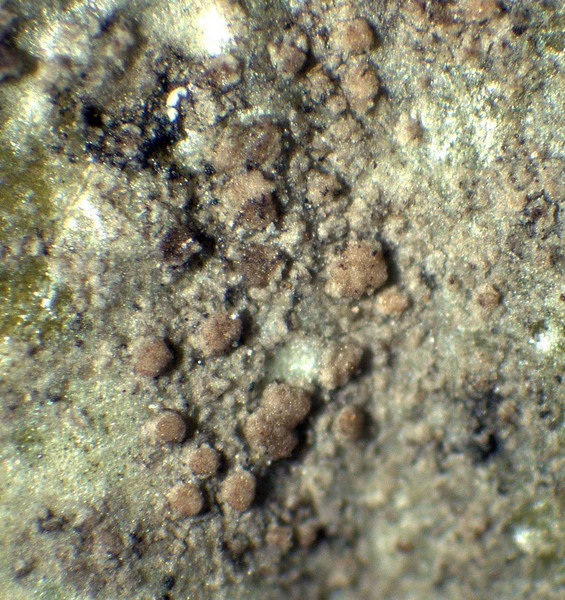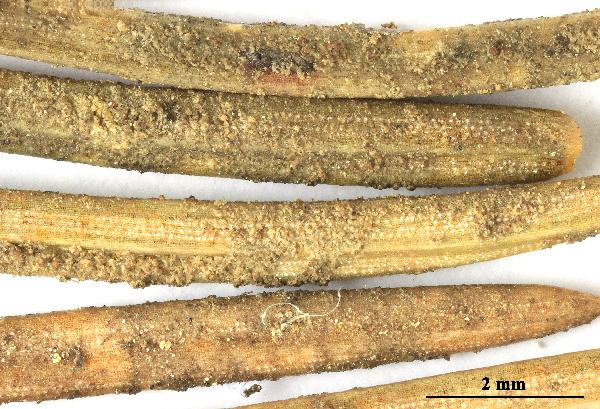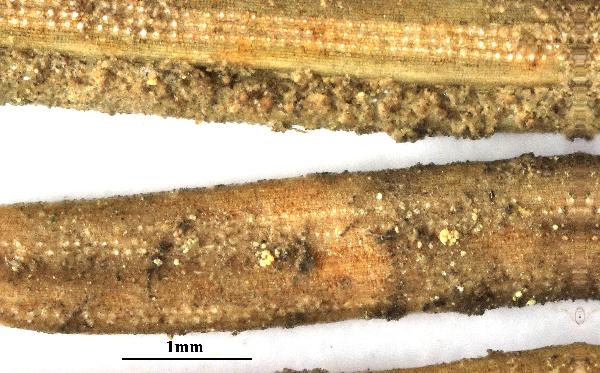Scoliciosporum curvatum Sérus.
Nordic J. Bot., 13, 4: 458, 1993
Synonyms:
Distribution:
Description: Thallus crustose, thinly episubstratic, granular or areolate, uneven, whitish, pale green or dark grey-green, consisting of c. 50 μm thick goniocysts. Apothecia usually abundant, biatorine, 0.1-0.15(-0.2) mm across, scattered, often immersed in thallus granules, beige, pale pinkish brown, finally often orange-brown or brown, with an initially flat, but rapidly turning strongly convex disc, soon immarginate. Proper exciple evident only in young apothecia, up to 10 μm thick, of elongated, interwoven hyphae, the outer surface usually with a few projecting hyphae; epithecium brownish; hymenium colourless; paraphyses strongly branched and anastomosing up to the upper part, immersed in a gelatinous matrix and resembling excipular hyphae, the apices mostly slightly clavate; hypothecium colourless, paraplectenchymatous in upper part. Asci 12-16-spored, broadly clavate, surrounded by a gelatinous, amyloid sheet, with a well-developed, amyloid tholus containing a widely cylindrical axial body and a poorly developed, bluntly conical ocular chamber, more or less Lecanora-type. Ascospores (0-)1-septate, hyaline, falciform or sigmoid, (7-)10-15(-18) x 1.5-2.5(-3.5) μm. Photobiont chlorococcoid, the cells (12-)14-20(-22) μm wide. Spot tests: thallus K-, C-, KC-, P-, UV-. Chemistry: without lichen substances.Note: mostly foliicolous in the understory of humid forests; in Central Europe on needles of Abies and Picea, elsewhere on leaves and green twigs of Buxus in very humid situations; widespread in Europe, but most common in its western parts, with several records from the Alps outside Italian territory: to be looked for in Italy.
Growth form: Crustose
Substrata: bark and leaves
Photobiont: green algae other than Trentepohlia
Reproductive strategy: mainly sexual
Most common in areas with a humid-warm climate (e.g. most of Tyrrenian Italy)
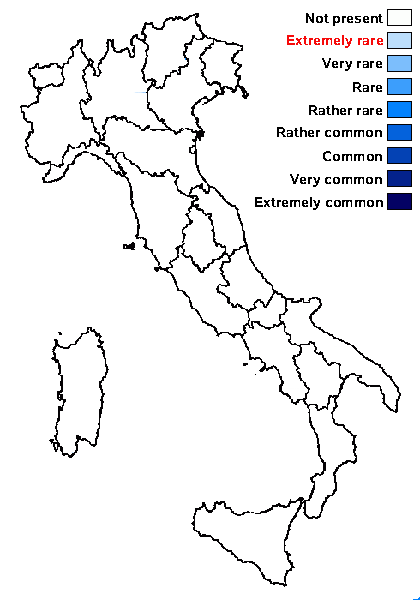
Predictive model
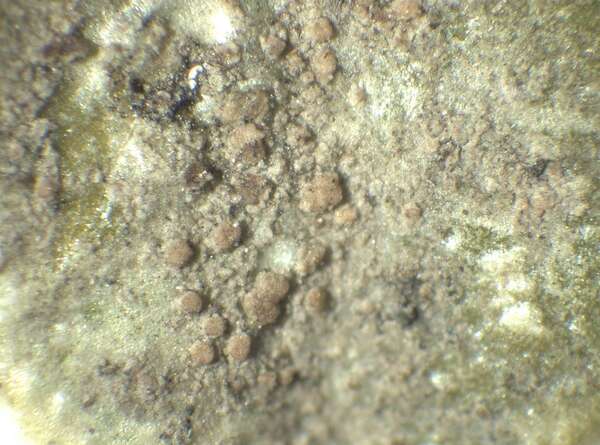

P.L. Nimis; Owner: Department of Life Sciences, University of Trieste
Herbarium: TSB (19735)
2002/07/11


Felix Schumm - CC BY-SA 4.0
[VZR129}, Hispania. Navarra. Usún, Arbayún, in ripa rivuli, 500 m.
Foliicola (Buxus sempervirens). Leg. P. v. d. Boom & J. Etayo, 7.1993,
det. J. Etayo. EX A. VEZDA: LICHENES RARIORES EXSICCATI NR. 129.


Felix Schumm - CC BY-SA 4.0
[VZR129}, Hispania. Navarra. Usún, Arbayún, in ripa rivuli, 500 m.
Foliicola (Buxus sempervirens). Leg. P. v. d. Boom & J. Etayo, 7.1993,
det. J. Etayo. EX A. VEZDA: LICHENES RARIORES EXSICCATI NR. 129.
Growth form: Crustose
Substrata: bark and leaves
Photobiont: green algae other than Trentepohlia
Reproductive strategy: mainly sexual
Most common in areas with a humid-warm climate (e.g. most of Tyrrenian Italy)

Predictive model


P.L. Nimis; Owner: Department of Life Sciences, University of Trieste
Herbarium: TSB (19735)
2002/07/11


Felix Schumm - CC BY-SA 4.0
[VZR129}, Hispania. Navarra. Usún, Arbayún, in ripa rivuli, 500 m. Foliicola (Buxus sempervirens). Leg. P. v. d. Boom & J. Etayo, 7.1993, det. J. Etayo. EX A. VEZDA: LICHENES RARIORES EXSICCATI NR. 129.


 INDEX FUNGORUM
INDEX FUNGORUM
 GBIF
GBIF
